SERVICES
Infrared Thermography | Pro -Check Home Inspections Colorado Springs
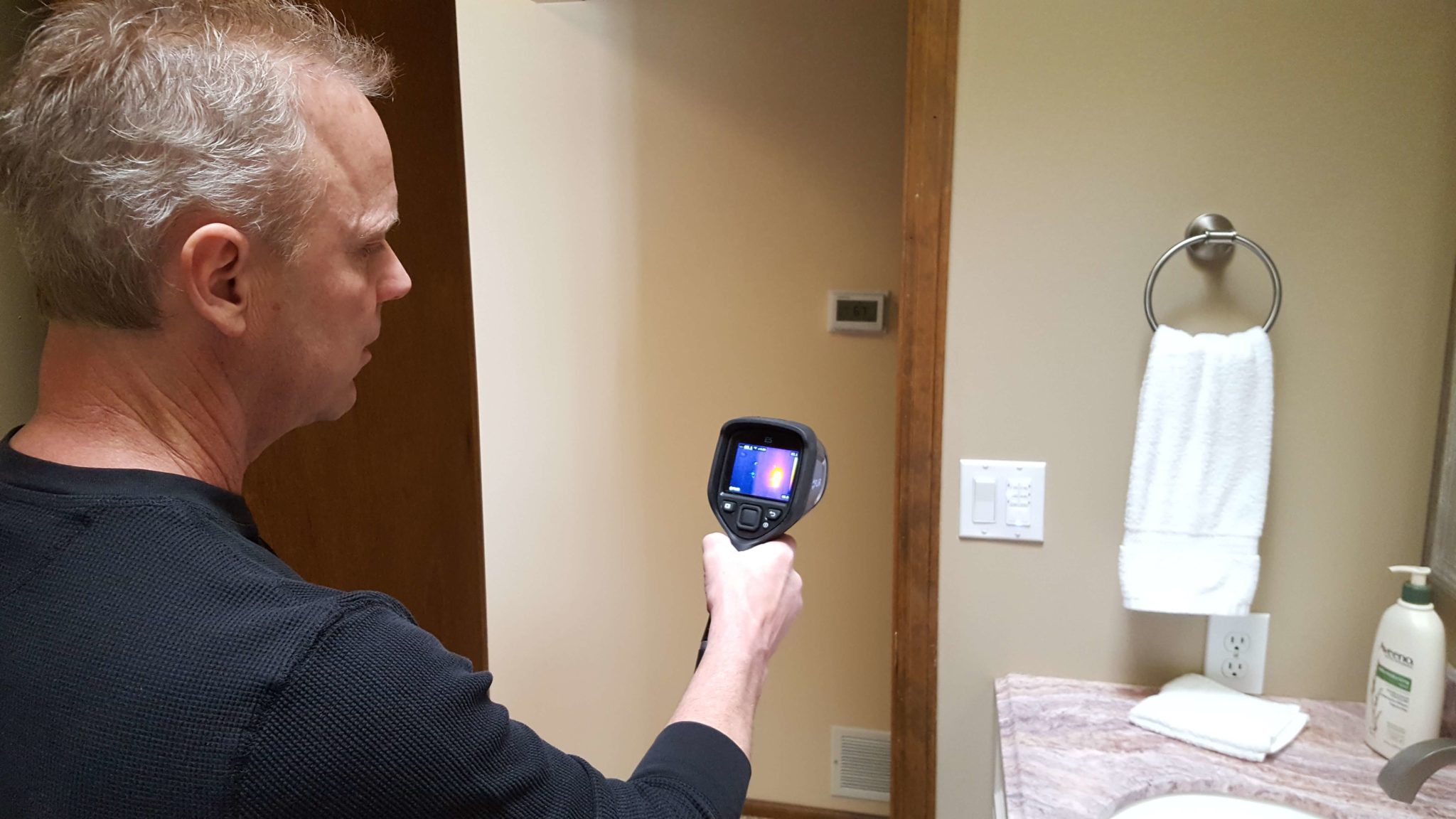
(IR) Thermography and the Home Inspection:
Infrared Thermography is a valuable add-on service to your home inspection. Pro-Check Home Inspections includes infrared thermal imaging in each of our inspections. It is an advanced, non-invasive technology that allows us to show our clients things about their home that can’t be revealed using conventional inspection methods. A properly trained infrared thermographer and home inspector can interpret an infrared image and determine if a roof or plumbing leak exist, if there is missing insulation, if an electrical component is reaching critical temperature levels, or if no major issues exist at all.
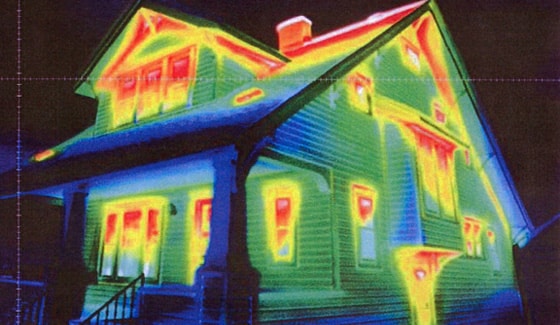
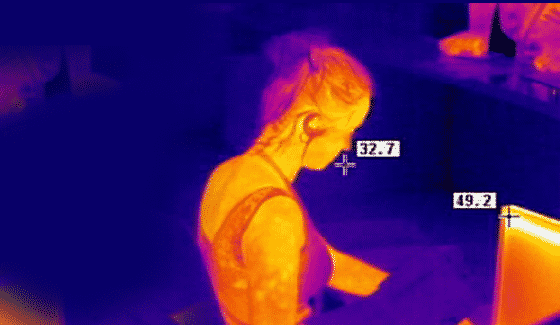
applications within a home inspection:
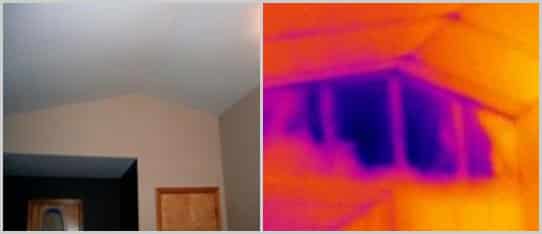
Missing Insulation
Seeing heat transfer into or out of a building can help determine if there is missing insulation in walls or ceilings. The temperature in the attic of this home is colder compared to the warmer house interior.
These are side-by-side images (visual vs. infrared) of a wall/ceiling junction in a home. The above IR image indicates missing insulation. When the attic was inspected, it was noted that the insulation attached to these areas had fallen down.
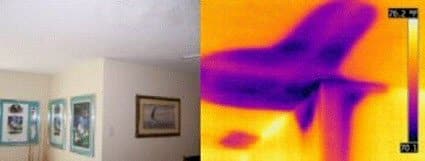
Roof Leaks
Evaporation occurs when a building material gets wet which creates a cooling effect that can be seen with an IR camera.
These side-by-side images (visual vs. infrared) illustrate an active roof leak within the interior of a home. The above photos show a roof leak that has changed the surface temperature of the ceiling sheetrock.
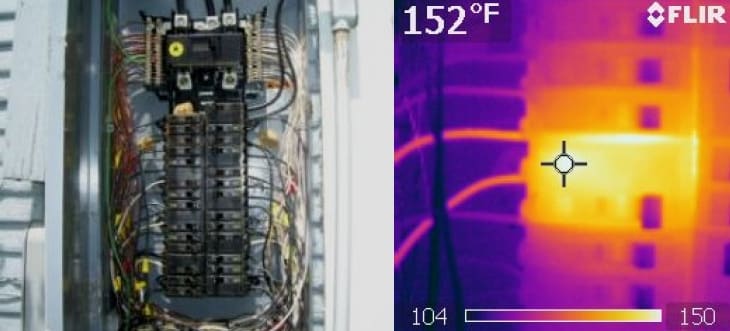
Overheated Electrical Components
When electrical components (wires, circuit breakers, switches, etc.) are energized with electrical energy, they heat up. This is to be expected, however if components heat up well beyond their design specifications, this may indicate a faulty component or a loose connection. Either situation may also lead to a fire in some circumstances.
These side-by-side images (visual vs. infrared) illustrate the heat energy given off of by energized wiring (infrared vs. visual). This is a normal occurrence when wiring is energized (powered), however a properly trained IR thermographer can analyze what is considered normal versus what may be considered excessive heating of wiring or a thermal gradient.
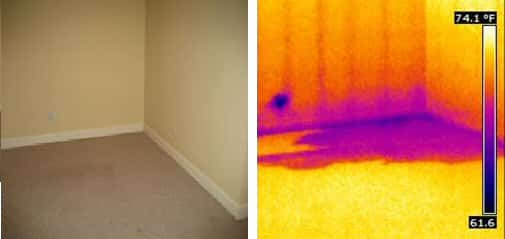
Water Entry
Water can enter through the foundation, behind siding materials, as well as around doors and windows if not properly sealed and/or flashed.
These side-by-side images (visual vs. infrared) illustrate ground water infiltration under the carpet of a basement floor. The above photos show a foundation leak that has changed the surface temperature of the flooring – No visual indication was found.
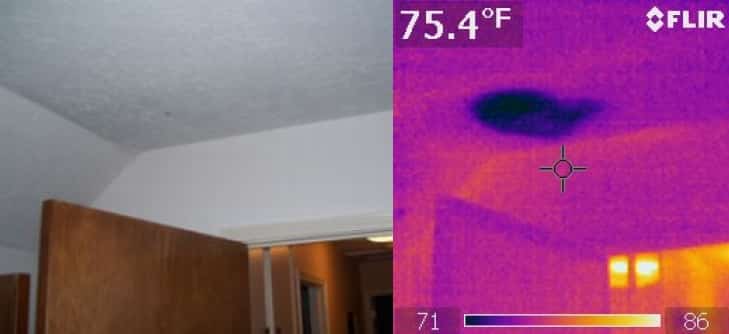
Plumbing Leaks
Again, since water has a high thermal capacitance, finding water in walls, floors, ceilings, and other materials can be found due to evaporation. The process of evaporation cools the wet surface. This surface will show as cooler via IR imaging.
These side-by-side images (visual vs. infrared) illustrate a plumbing leak from an upstairs bathroom. After inspection of the bathroom, it was determined that the toilet was not secured to the floor – No visual indication was found.
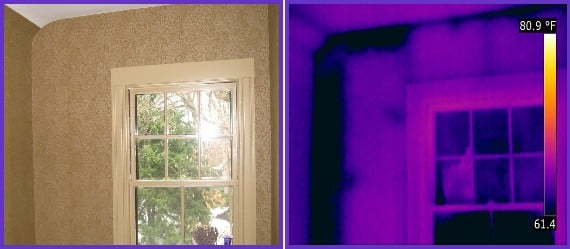
Air Infiltration/Exfiltration
Air entry into a building (or air exiting a building) can lead to drafts within the building and can lead to higher utility bills. By finding and repairing these air leakage locations, energy costs within the building can be lowered and overall comfort can be increased.
These side-by-side images (visual vs. infrared) illustrate a lack of insulation. The exterior temperature is much cooler compared to the warmer house interior.
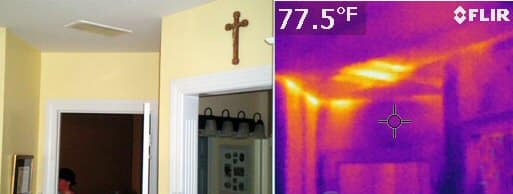
Leaky HVAC Ductwork
Ductwork is meant to convey heated or cooled air from the heating or cooling equipment to the building’s interior.
These side-by-side images (visual vs. infrared) illustrate an unsealed heating/cooling duct. Unsealed ducts will result in conditioned leaking into the attic causing higher energy bills and reduced comfort.
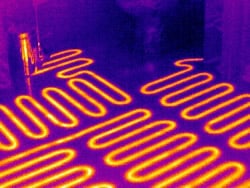
Radiant Floors
We are also able to inspect radiant heating (also known as underfloor heating)
Contact Roland for your Pro-Check Home Inspection!
Roland Stahnke
Colorado Springs, CO
Home Inspections Colorado Springs
Copyright © 2018 Pro-Check Home Inspections. All rights reserved.
